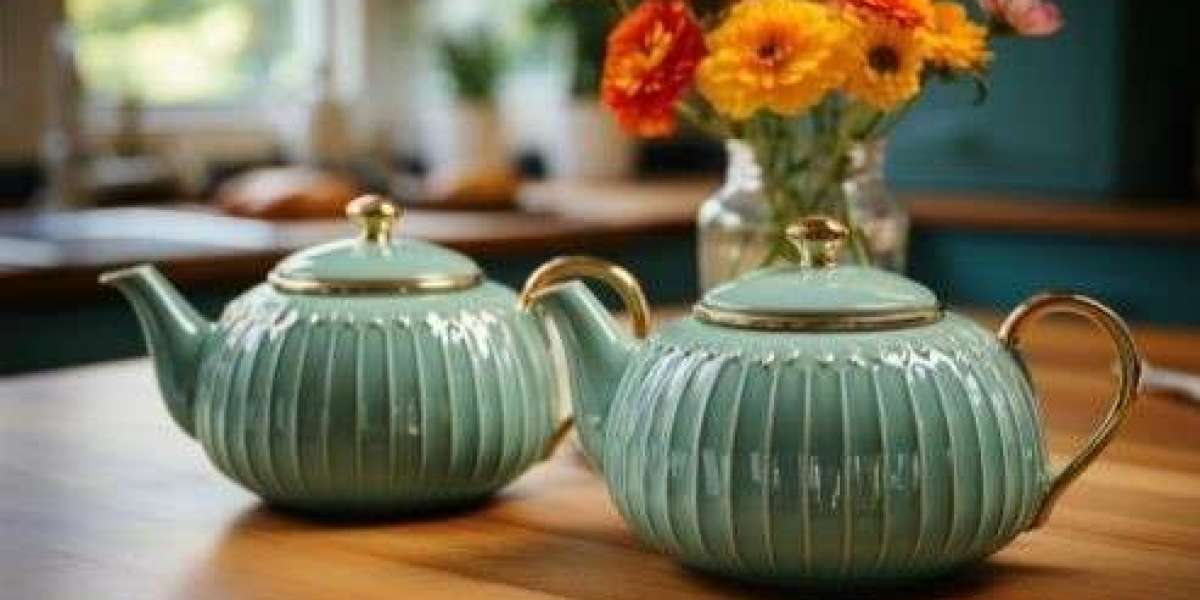Tea, a beverage cherished across cultures, transcends mere refreshment; it embodies a ritual, a social practice, and an art form. At the heart of this ritual lies the teapot, a vessel that not only brews the leaves but also serves as a canvas for artistic expression. Among the myriad materials used to craft teapots, ceramics stand out for their versatility, aesthetic appeal, and historical significance. In this article, we will delve into the world of ceramic teapots, exploring their rich history, the craftsmanship involved, and the enduring charm that has made them timeless.
Historical Evolution of Ceramic Teapots
Ceramic teapots trace their origins to ancient China during the Yuan Dynasty (1271–1368), initially designed with a utilitarian focus. The Ming (1368–1644) and Qing (1644–1912) dynasties witnessed a transformation, with artisans infusing intricate details and cultural symbolism into the teapot designs. Over the centuries, these vessels evolved from simple, functional tools to artistic expressions, reflecting the cultural influences of regions like China, Japan, and Europe. The timeless appeal of ceramic teapots persists through their meticulous craftsmanship, cultural significance, and seamless blend of functionality with aesthetic beauty.
Spread of Ceramic Teapot Culture
The culture of ceramic teapots spread from ancient China, where it originated, to various parts of the world over centuries. Initially confined to East Asia, the popularity of ceramic teapots grew along with the global appreciation for tea. Influenced by trade routes, cultural exchanges, and colonial expansion, ceramic teapot traditions reached Europe, Japan, and other regions, adapting to local aesthetics and customs. Today, the globalized nature of tea culture, facilitated by digital platforms, ensures the widespread adoption and appreciation of ceramic teapots across diverse societies.
Craftsmanship of Ceramic Teapots
Clay Selection
The choice of clay is crucial in determining the teapot's characteristics. Different types of clay, such as porcelain, stoneware, and earthenware, offer distinct textures, colors, and firing requirements. For example, porcelain provides a smooth, white surface ideal for intricate designs, while stoneware offers a more rustic and durable finish.
Throwing or Handbuilding
Artisans shape the teapot using either a potter's wheel (throwing) or by handbuilding. Throwing allows for a more symmetrical and uniform shape, while handbuilding enables greater creativity and unique, irregular forms. The artisan's skill in manipulating the clay at this stage greatly influences the teapot's final appearance.
Assembling Components
A typical teapot comprises several components, including the body, lid, spout, and handle. These components are individually crafted and then meticulously assembled to ensure a seamless fit. The lid, in particular, must fit snugly to retain heat during brewing.
Decoration and Glazing
Decoration is a defining aspect of ceramic teapots. Artisans use various techniques such as carving, painting, and slip trailing to adorn the surface with intricate patterns or scenes. The application of glaze not only enhances the ceramic teapot visual appeal but also adds a protective layer. The choice of glaze influences the final color, texture, and shine of the teapot.
Firing
Firing is the crucial step that transforms the clay into a durable, finished product. The temperature and duration of firing impact the teapot's strength, color, and overall aesthetic. Some teapots undergo multiple firings, allowing for the application of different glazes or intricate details in stages.
Contemporary Trends and Innovations
In the contemporary era, ceramic teapots witness a surge in innovative designs and trends. Artisans experiment with glazes, colors, and shapes, blending traditional craftsmanship with modern aesthetics. Sleek, minimalist designs appeal to a younger demographic, while vibrant glazes and unconventional shapes add a playful touch. Digital platforms facilitate a global exchange of ideas, allowing artisans to showcase their creations, fostering cross-cultural appreciation for ceramic teapot craftsmanship.
Conclusion
Ceramic teapots stand as silent witnesses to the evolution of tea culture across centuries and continents. From the delicate porcelain teapots of China to the rustic charm of Japanese wabi-sabi, each ceramic teapot tells a unique story of craftsmanship, culture, and artistry. As we continue to savor the timeless elegance of tea-drinking rituals, the ceramic teapot remains a symbol of the enduring connection between tradition and innovation, utility and beauty.



